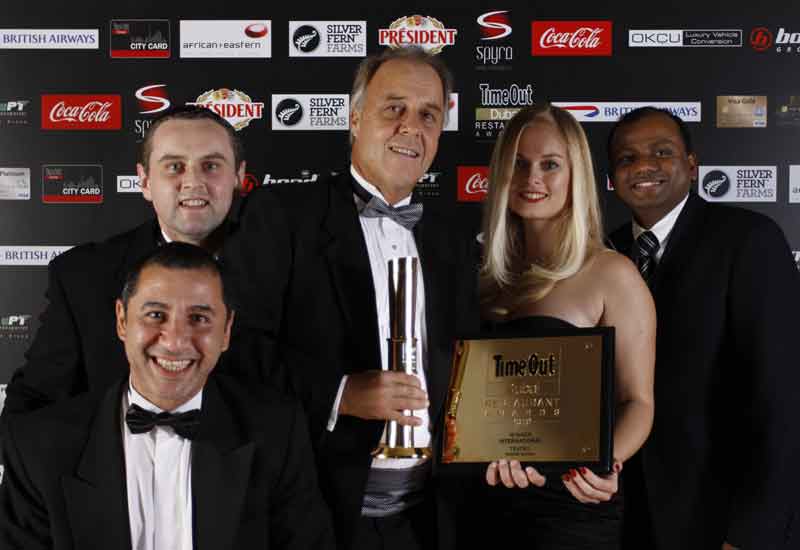Lupton: What I find quite difficult though is the variety of ingredients available here. I can tell you about 100 different suppliers who can get you Wagyu beef, but if I ask for some curly kale or fresh forced rhubarab, they don’t know what you’re talking about.
I’d love to be able to make my menu more diverse by putting some of these really interesting items on, but even if you could get it it wouldn’t be consistent. Everyone just focuses on those main items that they can make money on.
Kevin Pohl: Another issue is of course that often nowadays, chefs do not conduct their own negotiations with suppliers — instead it’s the purchasing department. They won’t push for something if they are told straight off that it’s not available here, but if they don’t have the drive to push for products to be made available, how is the ingredient pool here ever going to widen?
Prud’homme: I think a lot of suppliers here are working around the 50 biggest-selling items, which is where they can make their profit. They cannot bring in rhubarb every week if only one hotel is going to buy it, because they will end up with a load left over going off in the garbage.
Are there any items that you would rather not put on the menu, but customers demand them?
Gagliardi: That depends on the concept in the restaraunt, but for international restaurants and room service menus here you have to have a mezze plate of some sort and you have to have a mixed grill, or you will get complaints.
Sidhu: There are certain things for all hotels that you just have to offer, like a club sandwich. Even if you don’t put that on a room service menu, you have to be prepared to serve it, because it will inevitably be ordered.
Prud’homme: It’s the same with having strawberries on the breakfast buffet — you simply have to have them. If there is a shipment delay and they are not there, you get questions.

Advertisement
Since the economic downturn, ‘value’ has become a consumer buzzword; how has this impacted your menus?
Gagliardi: I think it comes down to compromising on the products we’re using. And of course that does not mean compromising on quality of the dishes, but rather accepting that some products are not an option. For example, not having Wagyu on your menu, but having a different cut.
Christian: I think it’s also about living up to the concept of your restaurant, as well as acting within your means. We are a top-quality steak restaurant, so we have to deliver on that.
Franck Detrait: When we developed the new menu for Traiteur, I did have to play around with the balance of dishes. It wasn’t a problem for me to have a high cost for scallops, because I sell a lot of onion soup and that’s not expensive to make. But you have to continuously play with this set-up to make sure you have the right balance.
Thushan Don: You have to monitor the success through sales software which charts exactly how popular each dish is. Then that is something that you must take into account when redeveloping the menu. So not only can you see the success of a new menu, you can see how the business is going overall. So if people suddenly change from ordering three courses to just having a main, you know you have to restructure things. It also helps by indicating the areas where service staff need to focus on upselling. Of course, if you have a new menu, it takes a little bit of time for people to get used to it.
Gagliardi: I think within a quarter you’re going to have a fair idea of how the menu is working.
Christian: I would say a quarter is already a bit too long, if something’s not quite working; within the first month you can probably tell if something is working or not, and if it’s not you can change it right away.
Dominicis: But then it’s hard to tell nowadays. Before the downturn, all outlets were busy, but there just isn’t the same number of people eating out now and certainly not the same spend. So covers have decreased — which means its been difficult to tell whether it’s your menu having a negative impact or just the slowdown.
Gagliardi: It’s basically about the investors at that point; we might like to be artists, but the bottom line is that we want to take home our pay cheque, so we have to fill up the restaurant.
For chefs today it’s a lot about the business and admin side. We only spend about 20% of our time in the kitchen, if we’re lucky — which is a shame, because you can lose touch.









 Search our database of more than 2,700 industry companies
Search our database of more than 2,700 industry companies









